‘the sea cannot be depleted‘ is an online artwork that uses sound and spoken word to call attention to the Solway Firth. Continue reading Art, activism and the nuclear sea: an interview with Wallace Heim
Event: Are We Over ISIS? A talk by Commonweal Trustee Paul Rogers
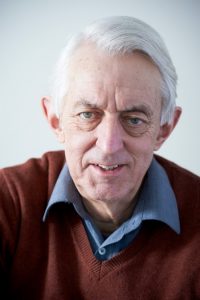
Paul Rogers
Commonweal trustee Paul Rogers will feature at a Bradford Literature Festival event on 7th July 2018: Are We Over ISIS?:
Rewind one year and the headlines were all about the war with ISIS and the threat it posed to western society. Now, it has almost disappeared from daily news – does this mean that ISIS itself has gone away?
Continue reading Event: Are We Over ISIS? A talk by Commonweal Trustee Paul Rogers
5 ways to enjoy Bradford’s peace heritage
Guest blogger Priyanka Mistry has rounded up 5 of Bradford’s main attractions connected with the peace movement, its art and its history.
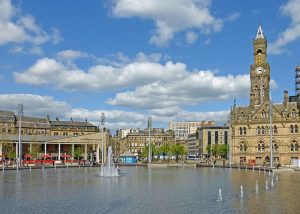
Bradford’s Centenary Square and City Hall. Source
Bradford has a little-known but long history of being a part of the peace movement and also the home of many of its artefacts, including the original designs for the world-famous nuclear disarmament symbol, often known as the CND symbol, which became popular in the 1960s.
- The Peace Museum
Bradford’s Peace Museum is the only museum in the UK dedicated to the history and untold stories of peace, peacemakers and peace movements in the UK.
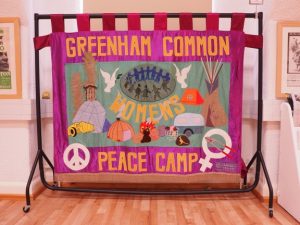
Greenham Common banner at the Peace Museum, Bradford
The museum was set up in 1992 after Shireen Shah, an MA student at Bradford University’s Peace Studies department, proposed a ‘Museum for Peace’ in 1990.
ActiveStills: photography as protest in Palestine/Israel & beyond
On May 16th 2018, guest blogger Dave Bradley went along to the Quaker Meeting House in Liverpool, UK, to hear about the art of protest photography from Ahmad Al-Bazz of ActiveStills.

Ahmad Al-Bazz
The collective
ActiveStills is a collective of Israeli, Palestinian and international photographers, formed in 2005.
Their work sometimes covers international struggles, such as those of gold miners in South America, or protesters in Turkey.
However, their main focus is on the ongoing struggle of Palestinians under Israeli occupation. They are photographers who love their art, operate at a professional level and are determined to use images to tell the story of a colonised people, and to challenge their oppression.
The speaker
Ahmad is one of the members of ActiveStills. He is near to the end of an MA in Film and Television Studies at the University of East Anglia.
Continue reading ActiveStills: photography as protest in Palestine/Israel & beyond
7 decades of nonviolence activism: Introducing… Trustee Michael Randle – PART 2
Michael Randle is Chair of the Commonweal Trustees. In this two-part post, we share some of the details of his extraordinary life and work.
Read Part 1 here
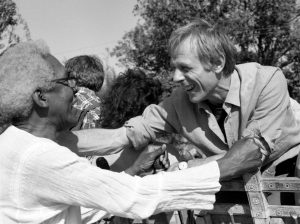
Michael Randle greeting Bayard Rustin at the War Resisters International Triennial in India in 1985 ©Michael Randle
Can you comment on your involvement in helping the spy George Blake to escape? Why did you do that?
George Blake was born in the Netherlands – his mother was Dutch and his father Egyptian, though his father had British citizenship, as did George.
As a young man he joined the Dutch resistance to the German occupation, but he had to flee to Spain via Belgium and France to Spain in 1941. He first came to Britain that year and joined the Secret Intelligence Service, MI6.
In 1961 he was sentenced to an unprecedented 42 years’ imprisonment for passing classified information to the Russians, including the names of some British agents operating in Eastern Europe.
I and other members of the Committee of 100 met him in Wormwood Scrubs prison when we were serving an 18-month sentence for organising an occupation and sit-down obstruction at Wethersfield air base in Essex.
Although no one from our group agreed with what he had done, we felt that his sentence was disproportionate and wrong, especially given some of the outrageous special operations undertaken by British and US agents – as well as by Soviet agents.
For example, the CIA and MI6 jointly organised a coup in Iran in 1953 that overthrew the elected Mosaddegh government with the loss of around a hundred lives. Continue reading 7 decades of nonviolence activism: Introducing… Trustee Michael Randle – PART 2
7 decades of nonviolence activism: Introducing… Trustee Michael Randle – PART 1
Michael Randle is Chair of the Commonweal Trustees. In this two-part post, we share some of the details of his extraordinary life and work.
Read Part 2 here

Michael Randle greeting Bayard Rustin at the War Resisters International Triennial in India in 1985 ©Michael Randle
You were born in the 1930s, Michael. What would you say has changed most about the world during your lifetime? What hasn’t changed at all?
I was born in late December in 1933. Some of the major events in my lifetime have been the Second World War, followed immediately by the start of the Cold War, and with it the threat of a nuclear holocaust.
Then in 1989 came the collapse of authoritarian-style communism in Eastern Europe, followed by the break-up of the Soviet Union itself, and the end, for a time at least, of the Cold War.
Today, unfortunately, we are witnessing the revival of the Cold War in what is in some respects a more threatening form.
No less significant historically has been the dissolution of empires – the British Empire among them – and the end of the apartheid regime in South Africa.
On another level there have been transformative social and political movements, such as the worldwide campaign against nuclear weapons, the US Civil Rights movement, the campaign for women’s equality, and anti-discrimination campaigns in various fields.
Particularly striking about so many of the campaigns against oppression and injustice has been the central role of civil nonviolent struggle. Continue reading 7 decades of nonviolence activism: Introducing… Trustee Michael Randle – PART 1
The nonviolence bookshelf – an education in 18 volumes!
In March/April 2018, we selected 18 titles on nonviolence activism to give away. Continue reading The nonviolence bookshelf – an education in 18 volumes!
Faith in peace: the work of Coventry Cathedral’s Reconciliation Ministry
Dr Alex Albans of the Reconciliation Ministry Team at Coventry Cathedral talks to us about war, peace and landscape design…
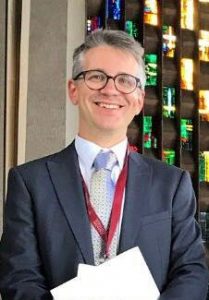
Alex Albans
You recently visited the Commonweal Collection, Alex – how did that come about?
My colleagues and I were invited to visit the Peace Museum in Bradford by Clive Barrett, who is the chair of trustees of the Peace Museum, because the cathedral’s Reconciliation Ministry has a partnership with the Anglican Pacifist Fellowship, which Clive helps to run.
On the trip we visited Special Collections at the University of Bradford’s JB Priestley Library to look at various documents, including some on the Bradford Reconciliation statue (there’s also one at Coventry).
Alison Cullingford of Special Collections also showed us up to the Commonweal Collection on the first floor of the library. Continue reading Faith in peace: the work of Coventry Cathedral’s Reconciliation Ministry
An interview with Matthew Hoggett, nephew of Commonweal founder David Hoggett
First, a reminder of how Commonweal began…
As many of Commonweal’s supporters know, our founder, David Hoggett, began the Commonweal Collection after having a serious accident while volunteering overseas.
It left him paralysed from the chest down, and it was after this, in 1958, with help from his family and friends, that he began to channel his formidable energy into extending and sharing his collection of books and pamphlets on peace and social justice.
He continued this work until he died in 1975, by which time the Collection contained around 3,000 volumes.
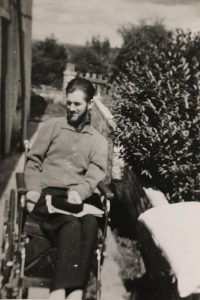
David Hoggett
Introducing Matthew Hoggett

Matthew Hoggett
Matthew is David’s nephew. He kindly took the time to speak to us this week and share some of his memories of his uncle and of volunteering in the Commonweal Collection as a teenager in Cheltenham in the early 1970s.
Continue reading An interview with Matthew Hoggett, nephew of Commonweal founder David Hoggett
Civil resistance – a handy (online) guide…
If you’re an activist, student or researcher with an interest in nonviolence and civil resistance, here’s a site you’ll probably find useful.
CivilResistance.info is an independent website that is
maintained by people committed to opposing war and all forms of injustice, and promoting understanding of nonviolence and nonviolent social change.
It collates key resources and developments in nonviolent and civil resistance movements, past and present.
The background
In 2006, Housmans in London published People Power and Protest Since 1945: A Bibliography of Nonviolent Action, which was edited by Michael Randle, April Carter and the late Howard Clark. Howard Clark also set up CivilResistance.info and made the work available there.

People Power and Protest Since 1945: A Bibliography of Nonviolent Action